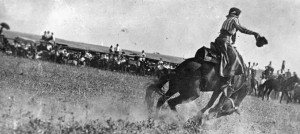
In 1921, the Montana Federation of Colored Women’s Clubs (MFCWC) organized “to encourage true womanhood . . . [and] to promote interest in social uplift.” While its members engaged in many traditional women’s club activities—raising money for scholarships, creating opportunities for children, and providing aid to the sick—advancing the cause of civil rights in Montana was one of the organization’s most important legacies.
MFCWC (originally the Montana Federation of Negro Women’s Clubs) held its inaugural meeting in Butte, where members agreed on five organizing principles: “Courtesy—Justice—The Rights of Minority—one thing at a time, and a rule of majority.” At the local level, member clubs engaged in a variety of volunteer work, from bringing flowers to hospital patients to adding works by African American authors to local libraries. But at both the local and the state levels, MFCWC members also concentrated on racial politics, raising funds for the NAACP and taking positions on abolishing the poll tax and upholding anti-lynching laws.
The MFCWC’s legislative committee became especially active after World War II, and from 1949 to 1955 it led the campaign to pass civil rights legislation in Montana. The committee’s efforts reflected Montana’s complicated racial climate. As its members advocated for legislative change, the MFCWC often encountered resistance from white Montanans, who simultaneously asserted that Montana did not have a “racial problem” and that, where prejudice did exist, it could not “be changed by passing a law.”
![Catalog # PAc 96-9 3 [Montana State Vocational School for Girls.] 1920](https://montanawomenshistory.org/wp-content/uploads/2014/06/101WHM-PAc-96-9-3-300x228.jpg)







